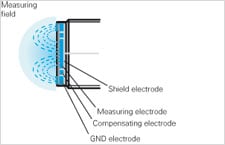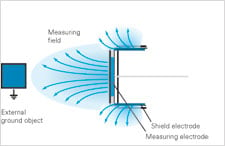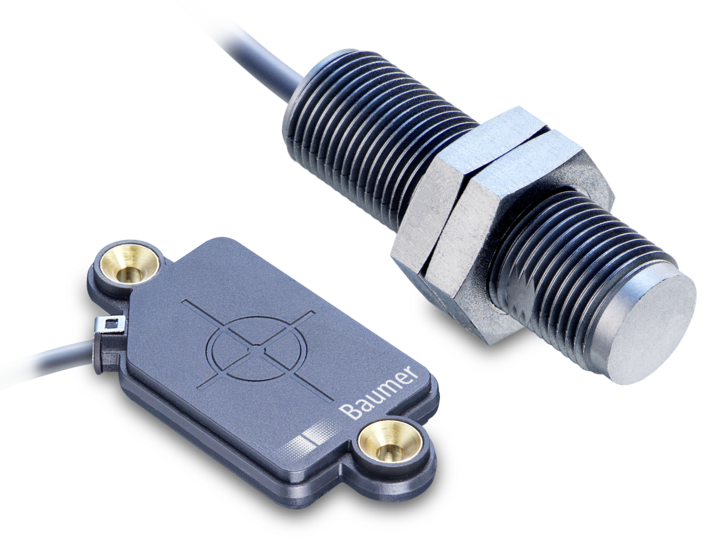
The capacitive sensor basically functions like an open capacitor. An electrical field is formed between the measuring electrode and the GND electrode. If a material with a dielectric constant εr greater than air enters the electrical field, the capacity of the field increases depending on the εr of this material.
The electronics measure this capacity increase, the generated signal is conditioned during subsequent signal processing and causes output switching at a corresponding magnitude.
Dielectric constant
Capacitive sensors detect conductive as well as non-conductive media with a dielectric constant εr > 1. The dielectric constant εr (also relative permittivity or inductive capacitance) of a material indicates how many times greater the electric flux density will become if instead of vacuum (air) the corresponding material enters the measuring field.
Conductive media
Conductive media typically have an electrical conductivity > 20 μS/cm. They can easily be detected by all sensor types whether they have a GND electrode or not. In conductive media the dielectric constant is irrelevant for the sensing distance. The sensing distance is influenced by the size of the object and its grounding.
Conductive media include:
- Water
- Blood
- Ink
- Milk
- Acetone
- Metals
Non-conductive media
Non-conductive media typically have an electrical conductivity < 20 μS/cm. In general sensors with a GND electrode are recommended for non-conductive media. If a non-conductive object is moved into the sensor field, the field increases depending on the dielectric constant and the size of the material to be detected, increasing the capacity of the measuring field. The lower εr is, the harder it is to detect the medium. Generally it can be said that e.g. for plastics with εr = 3 the effective sensing distance Sr corresponds to approximately 50% of the nominal sensing distance Sn.





